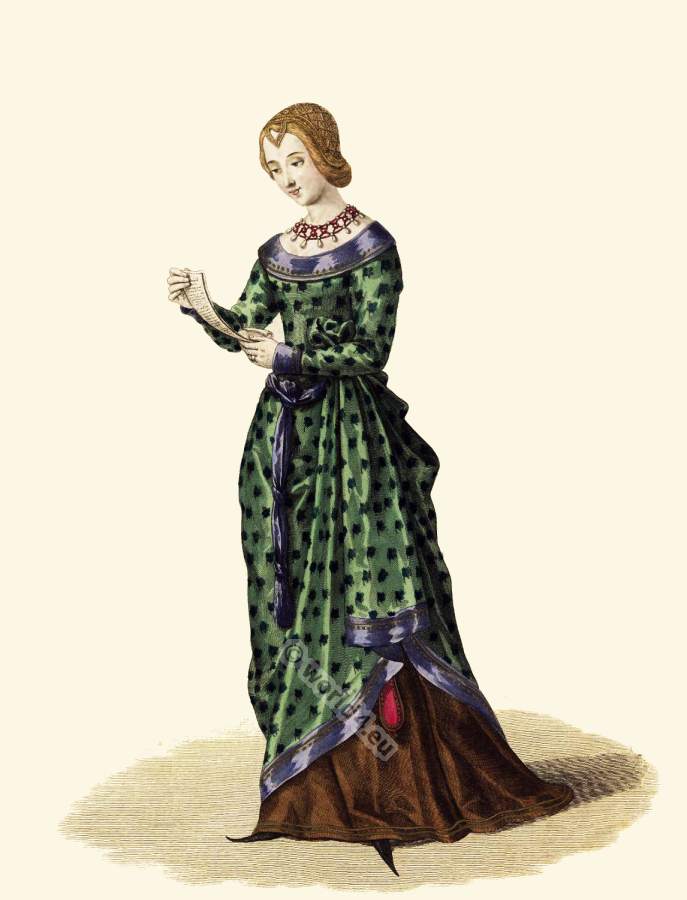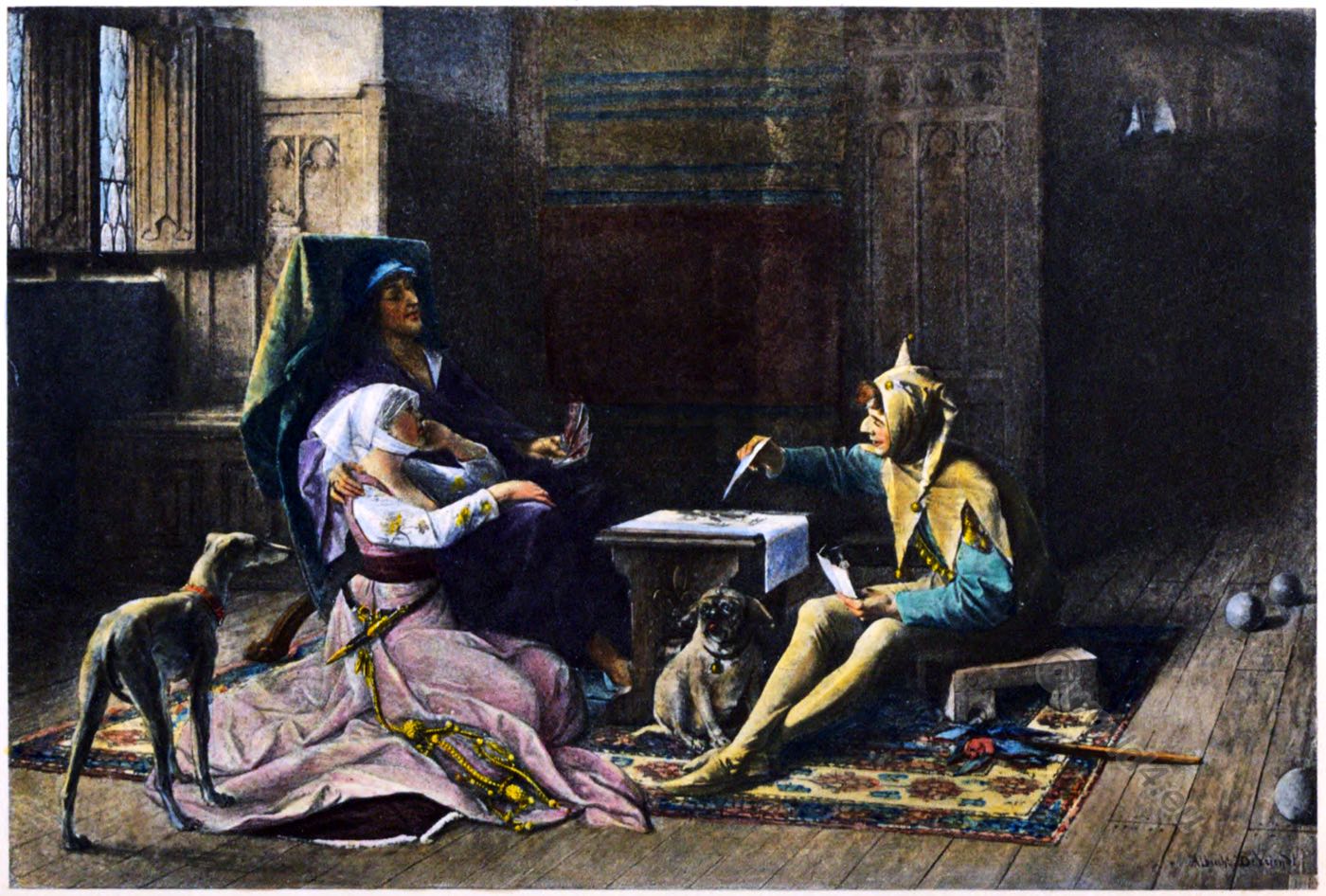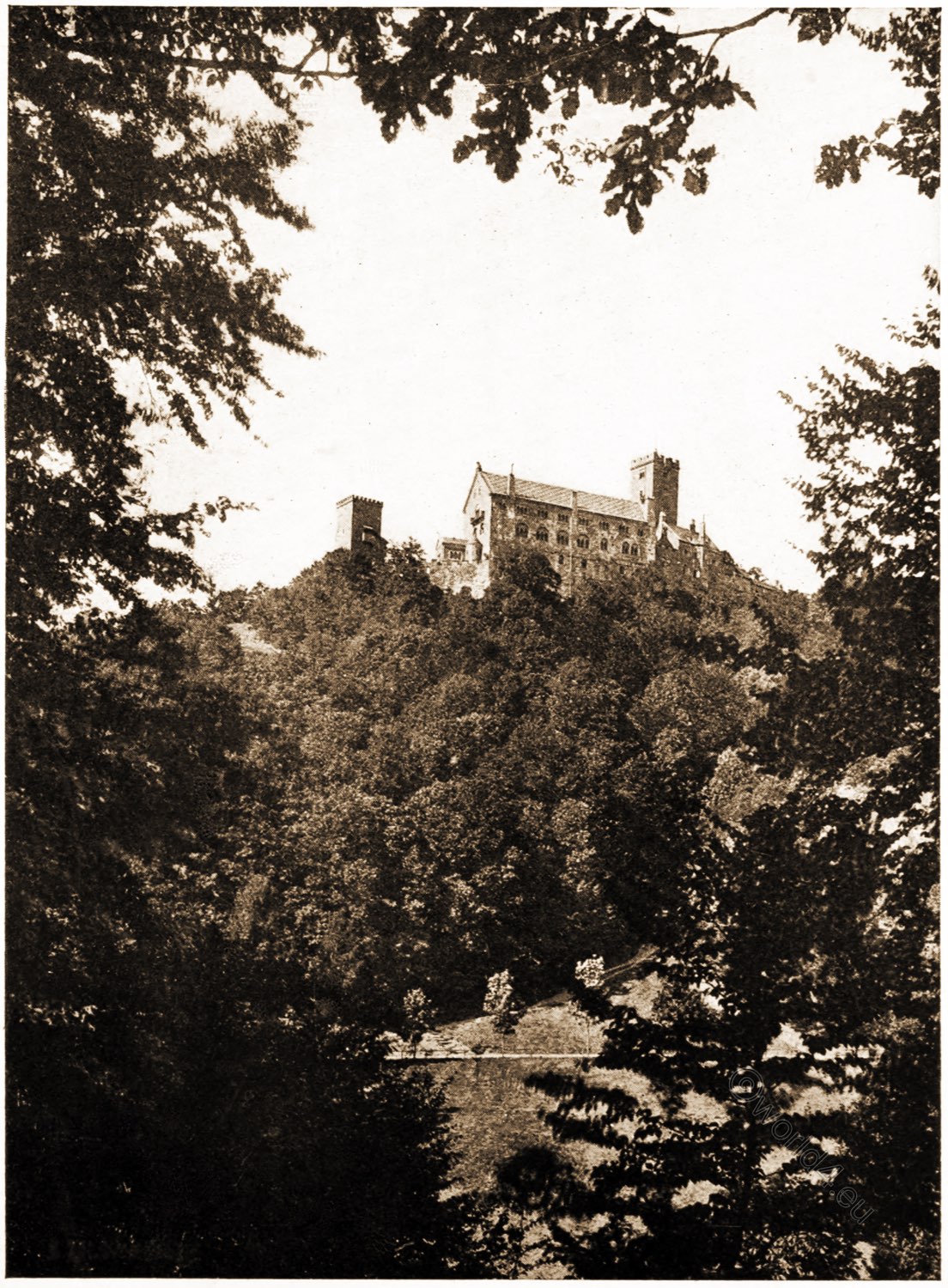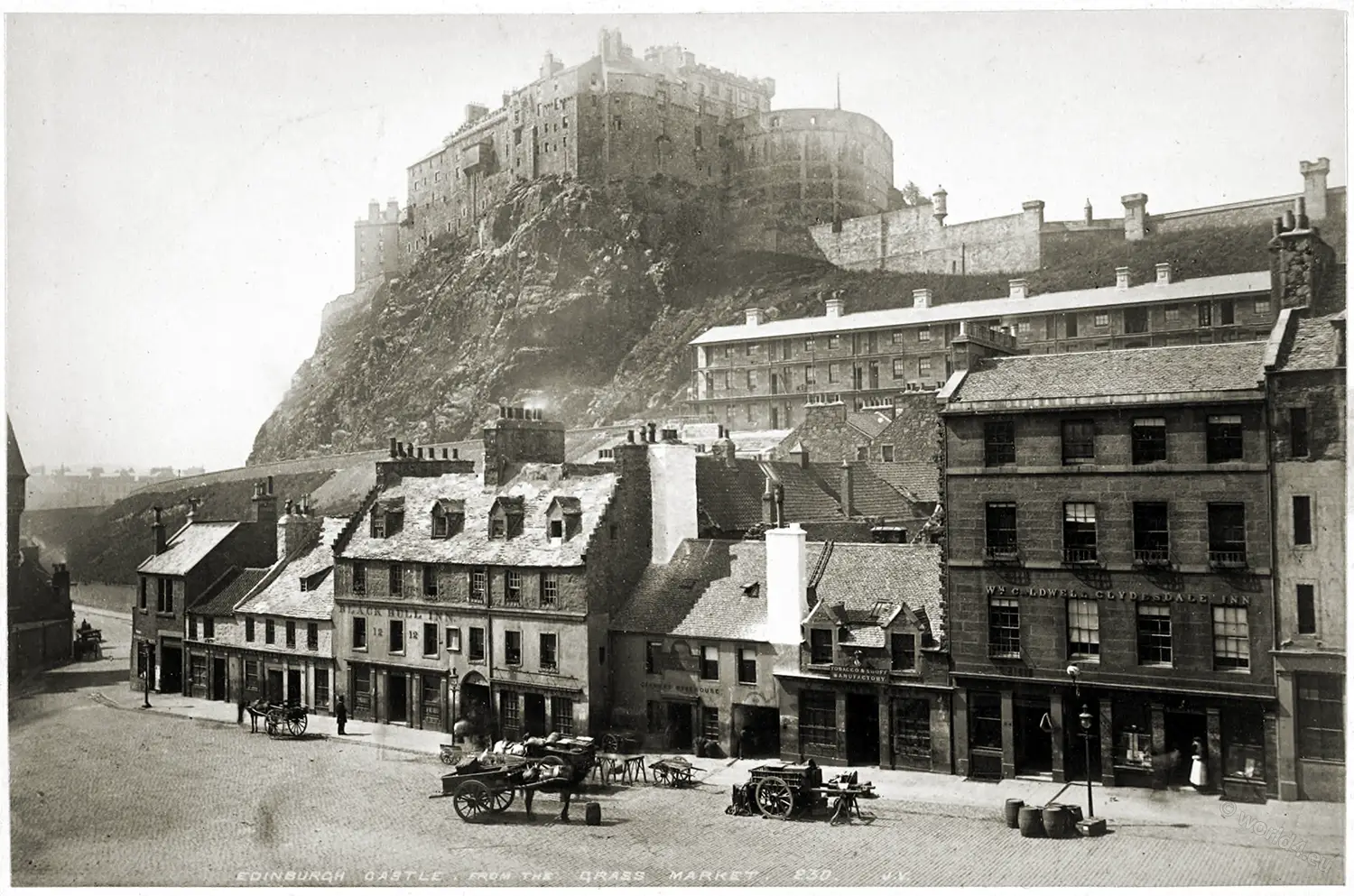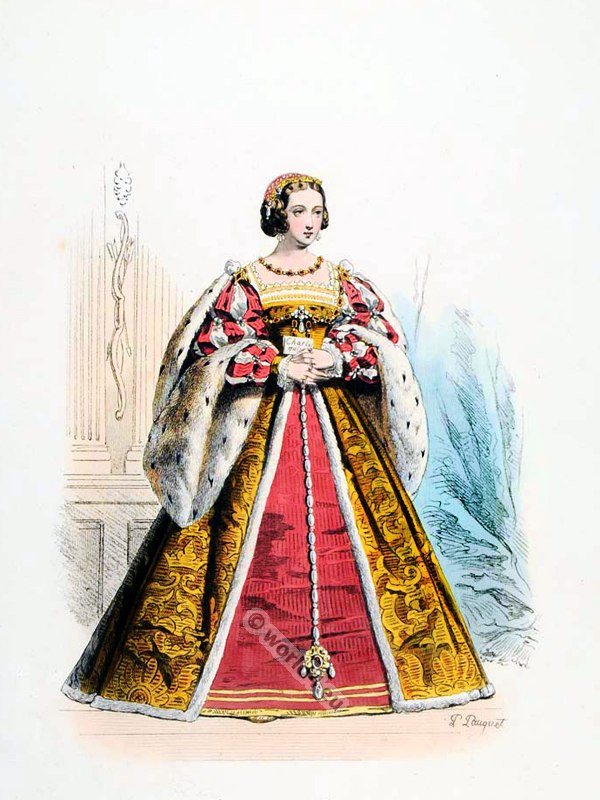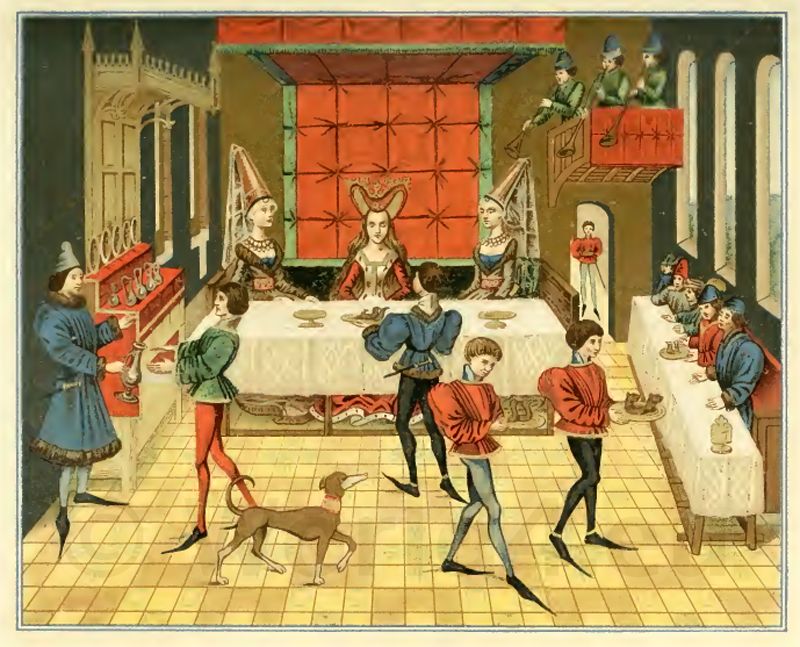THE CASTLE OF THURNBERG. CALLED ALSO “THE MOUSE.”
"And there they stand, as stands a lofty mind,
Worn, but unstooping to the baser crowd.
All tenantless save to the crannying wind,
Or holding dark communion with the cloud."
Byron.
This, the most perfect of all the Rhenish castles, is also one of the most closely associated with the legendary lore, that gives a new grace and a fresh charm to every rock and hill and plain along the banks of the “king of rivers.” Two castles, nearly opposite in position, once lodged two opposing chiefs, between whom a mortal feud arose, allegorised and recorded by the sobriquets, then given to their rocky fortresses, of “Cat and Mouse.” An antiphrasis, however, seems to have been employed in the appropriation of the names, for the Mouse is considerably superior in extent, inaccessibility, and military strength, to its rival.
Upon the rock, now adorned by the majestic ruins of Thurnberg, a still more ancient fortalice arose, which, after an existence of many centuries, was abandoned by its lord, and suffered to fall into decay. Its only abiding tenant was one who was beautiful, and fair, and young, for she possessed the gift of perpetual juvenility; but whose smiles were wasteful, and whose look was withering and wild. A noble youth, whose pursuit of game conducted him towards the ruined castle, entered, and lay down within its shelter, to rest himself from the fatigue of that day’s sport, when the White Maiden of Thurnberg appeared, addressed him in words of kindness, of affection, of love, and ministered to his wants with a high-crowned beaker of the best Rhenish wine.
From this moment he became a prey to the most violent passions; whenever he appeared in public, the absence of his manner betrayed the all-absorbing nature of the spell that bound him; whenever he withdrew from society, his agonies were even more insupportable. It was in vain he sought a renewal of the fatal interview with the fair enchantress of the castle; she persevered in her cruel concealment until the hand of death was laid inevitably upon her victim; but then she stood beside his stony couch within the castle-walls, and seemed to watch for the moment when his injured spirit could no longer abide on earth.*
*) Vide Legend of the White Maiden, by J. Snowe.
To the towers of the White Maiden, in lapse of time, succeeded the Castle, whose grand and varied form now fills the summit of the pyramidal rock. The famous Kuno von Falkenstein *) — a prince possessed of the most extensive domains, in his age, on the banks of the Rhine, the ability to govern them, and the wickedness to abuse his great power—looking upon the site of Thurnberg as well-suited to his purposes of aggression, and provisions of defence, re-edified, enlarged, and strengthened the castle, so that, while contemporary structures have but weakly withstood the abrading power of time, the wood-work, and other equally perishable portions of the building, even now are all that the visiter finds wanting at Thurnberg.
*) Kuno II of Falkenstein (actually Konrad of Falkenstein; c. 1320- 1388 was Archbishop and Elector of Trier from 1362 to 1388.
Kuno, after a fashion not strictly limited *) to Rhenish princes, was both a saint and a soldier, and held the archdioceses of Mayence, Treves (Trier), and Cologne; but preferring this impregnable fortress to his episcopal palaces, it was not infrequently called, in consequence, “Kunoburg.”
*) A prince of the blood-royal of England, not many years since, was commander-in-chief of the British army, and Bishop of Osnabrück.
This distinguished member of the church militant became celebrated for his courage and address at every passage of arms; and his adventures, in those days of chivalry, were completely Quixotic. Postponing the sacred robes to a coat of mail, Kuno appeared at the court of the Emperor of Germany, armed cap-a-pie, and obtained so high a reputation for firmness and integrity, that, during a contest for the imperial throne, he was chosen director of the temporalities of the electorate of Treves (Trier).
In this duty he acquitted himself with so much wisdom and courage, that he became an object of respect amongst the feudal lords of Germany—of hatred to all the licentious and traitorous. His life was frequently attempted by the latter, and his bravery alone preserved him from their dastardly designs. Set upon by assassins, who lay in ambush to destroy him, he gallantly defended himself, and effected his escape: almost surrounded, on another occasion, by no less inveterate enemies, he fought his way through them—when the fleetness of his steed accomplished the rest.
While he dwelt at Ehrenfels, many plots were laid for his destruction ; his castle was at one period completely beleaguered, while he lay in his bed unconscious of the danger. But the elang of arms awoke him from his slumbers; and, leaping from one of the uppermost windows, he alighted unhurt upon the terrace, then killing the sentinel on the spot, escaped most probably from a cruel death.
This last attack upon his life determined the aged man upon withdrawing from political and military occupations; and Sir Kuno, as he was generally styled, in 1388 ceded the archdiocese of Treves to Werner von Königstein, and, retiring to Thurnberg or Kunoburg castle *), there closed his eventful career in a manner more accordant with his spiritual than his temporal profession.
*) Over the years, the castle was given the names Thurnberg Castle or Deuernburg Castle and Deuernberg Castle respectively, in addition to Maus Castle and Peterseck Castle.
Beneath the shelter of the precipitous hill on which Sir Kuno’s fortress stands, is the picturesque village of Welmich, distinguished by its antique church, and the massive pedestal of an old gothic tower. In sublimity of character, the feudal palace of Thurnberg is unequalled; in exquisite expression of retirement, and peaceful occupancy, the vassal-village of Welmich acknowledges no rival on the Rhine.
The writer Victor Hugo devoted a separate chapter to the castle in his book Rhine Journey in 1840.
Source: The Rhine, Italy, and Greece in a series of drawings from nature by George Newenham (1790?-1877). London: Fisher 1841.
Discover more from World4 Costume Culture History
Subscribe to get the latest posts sent to your email.


